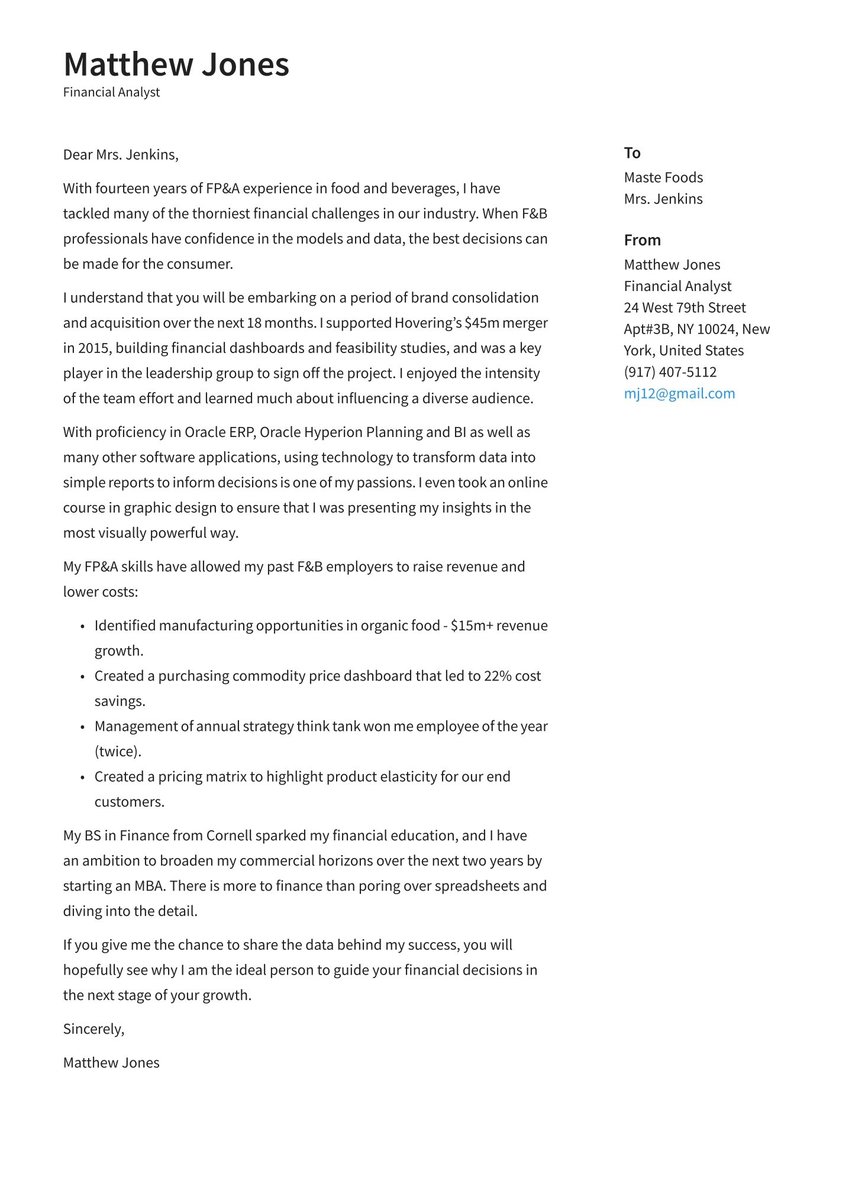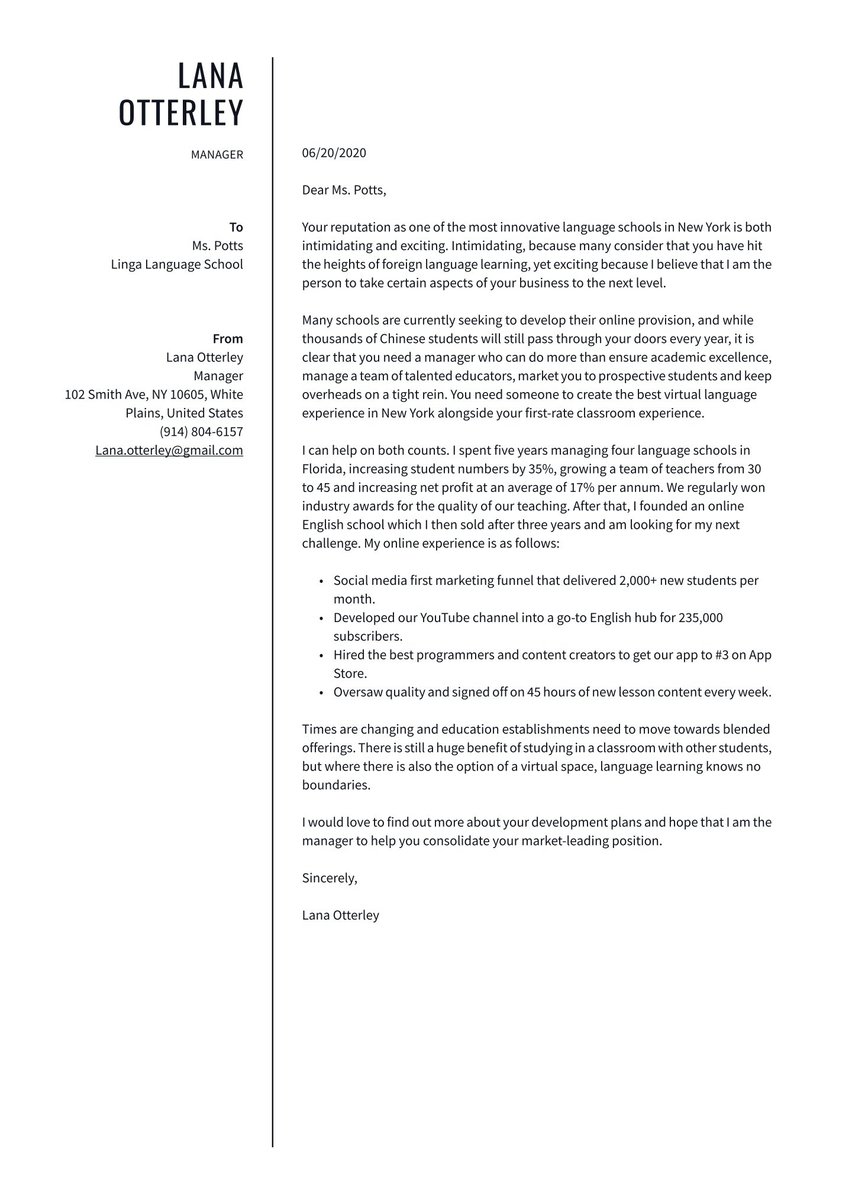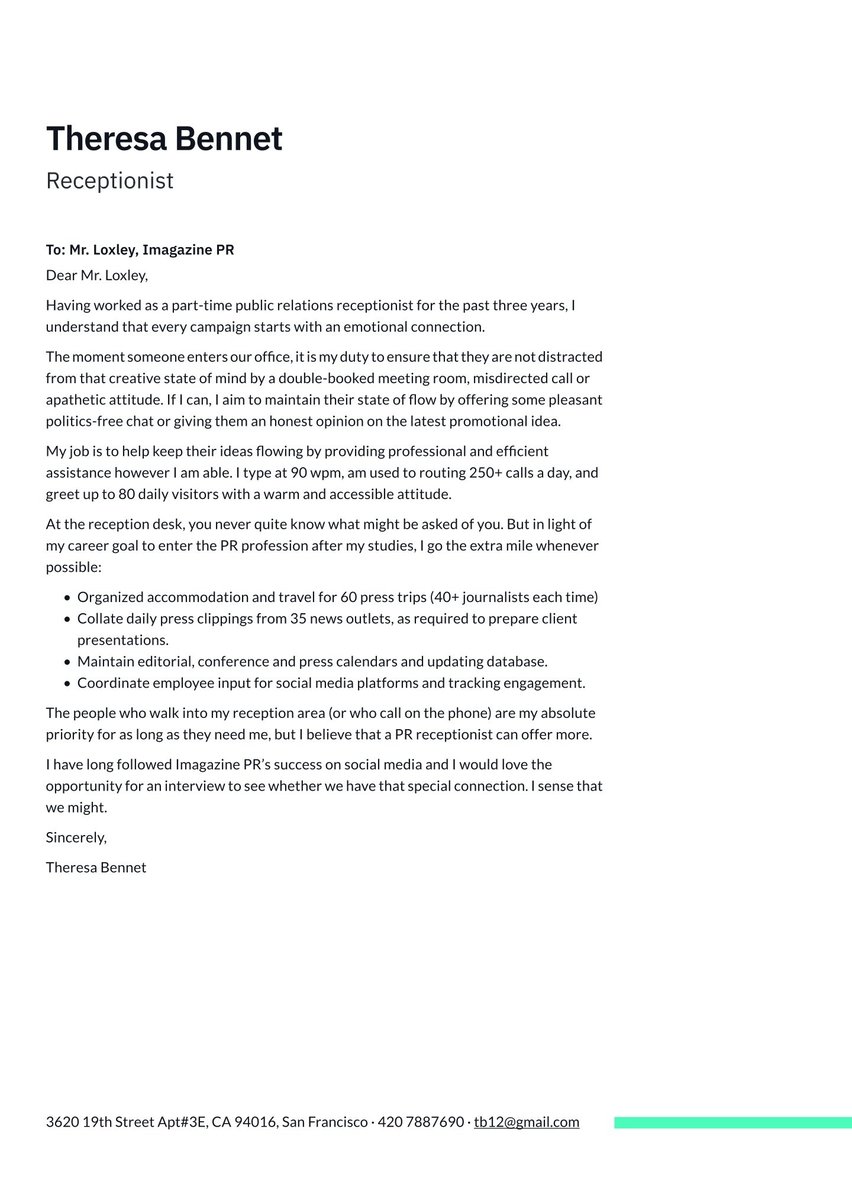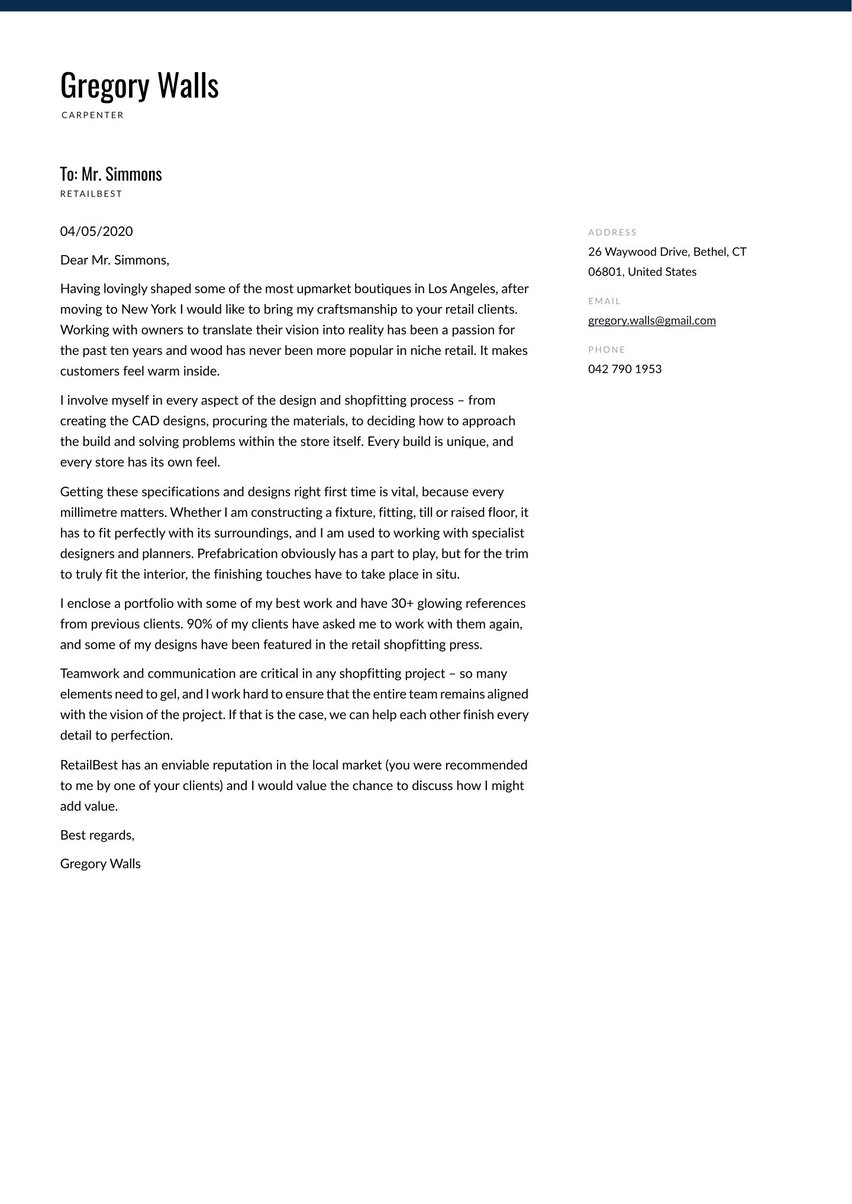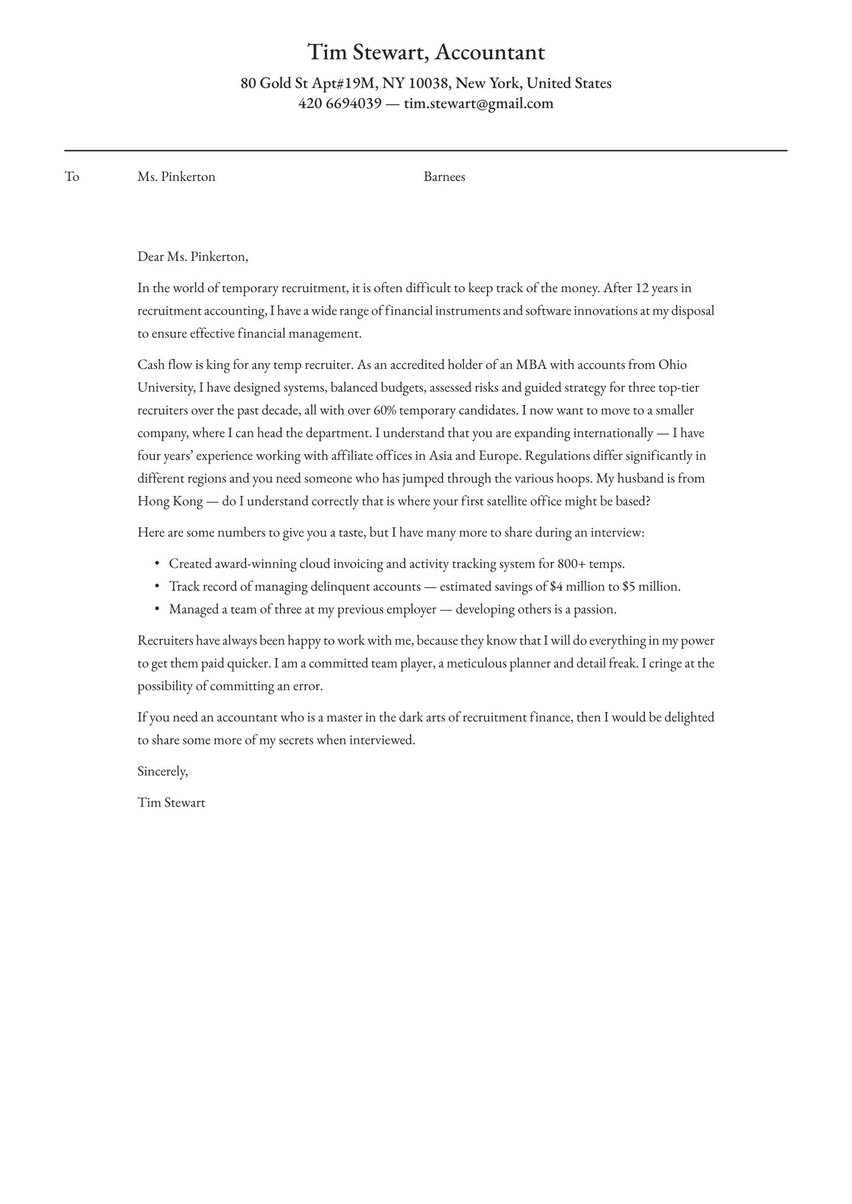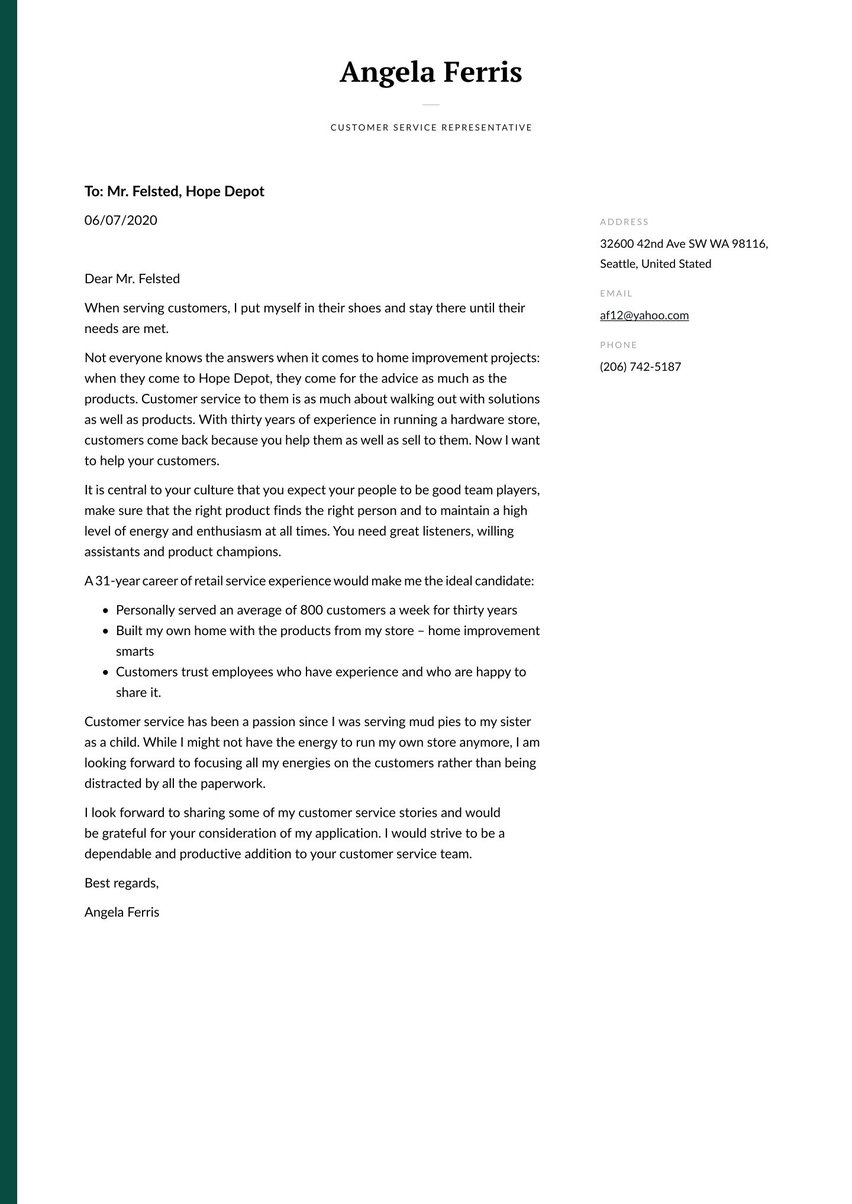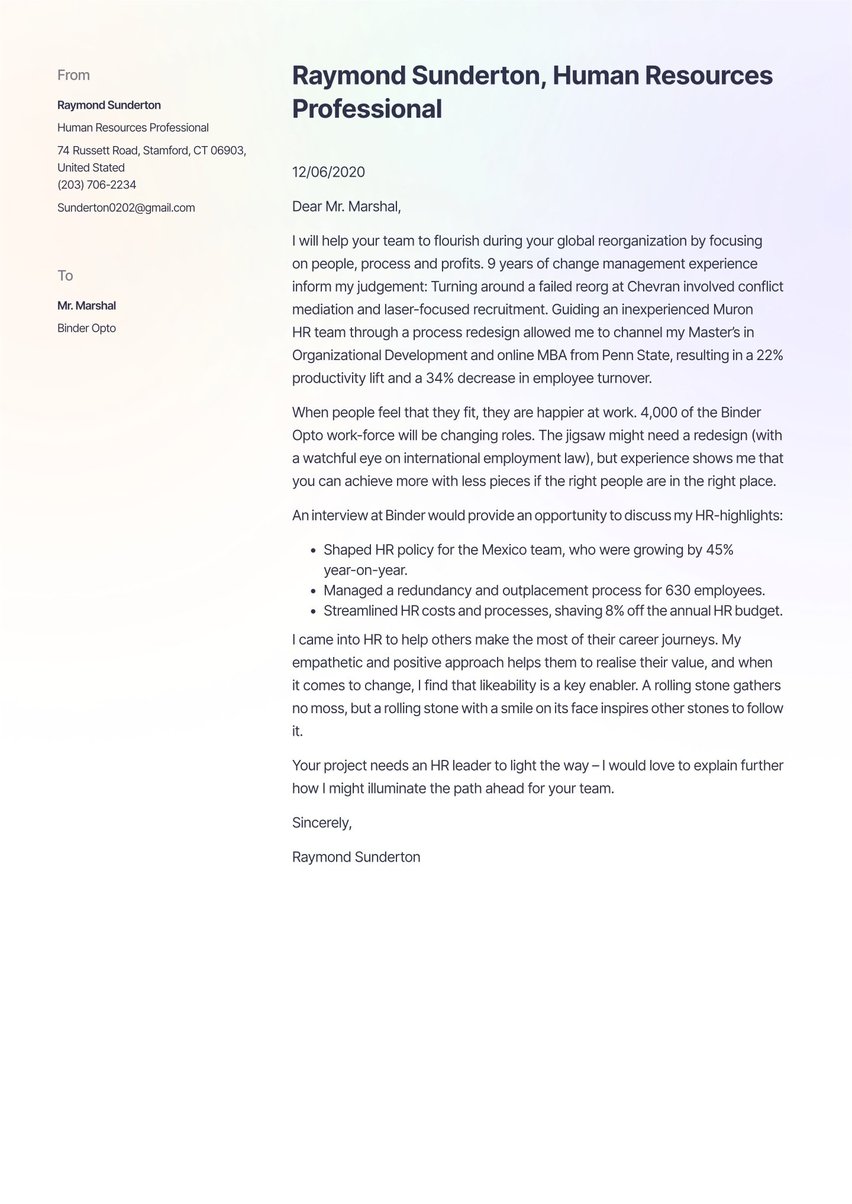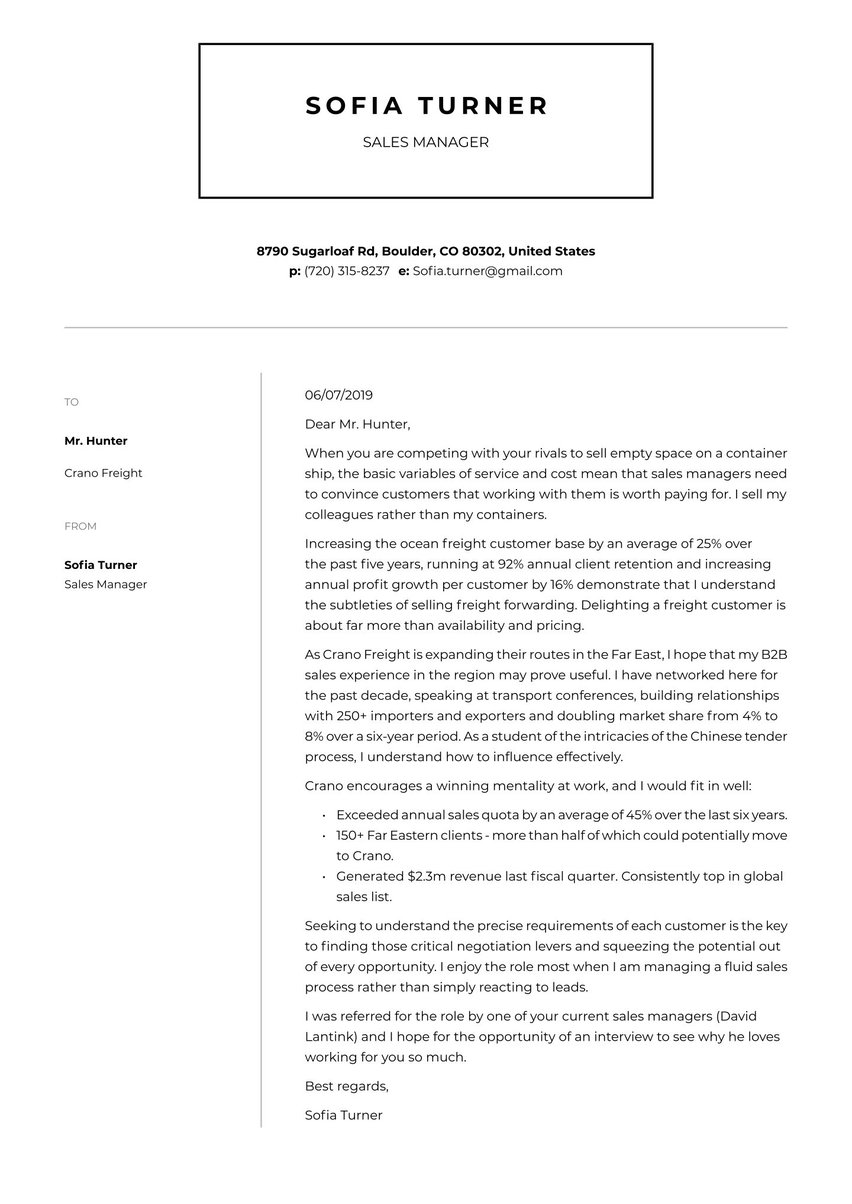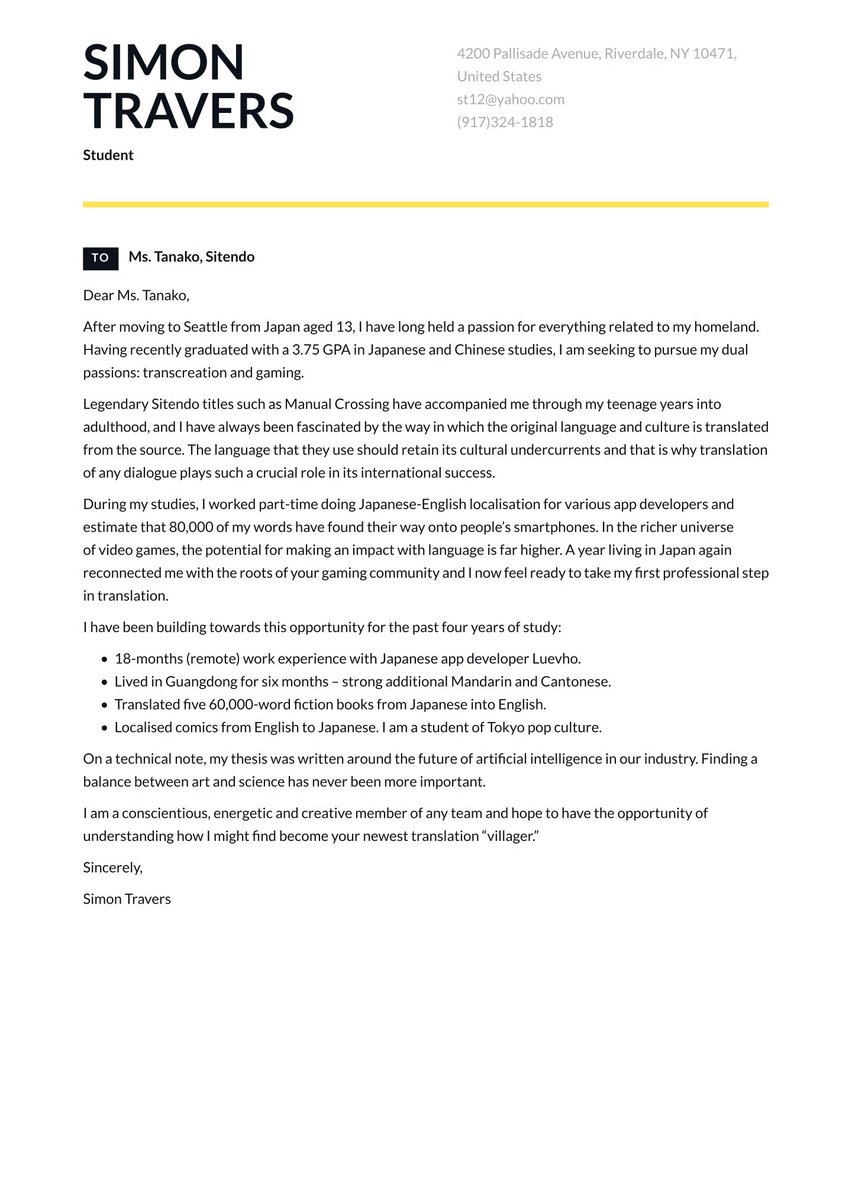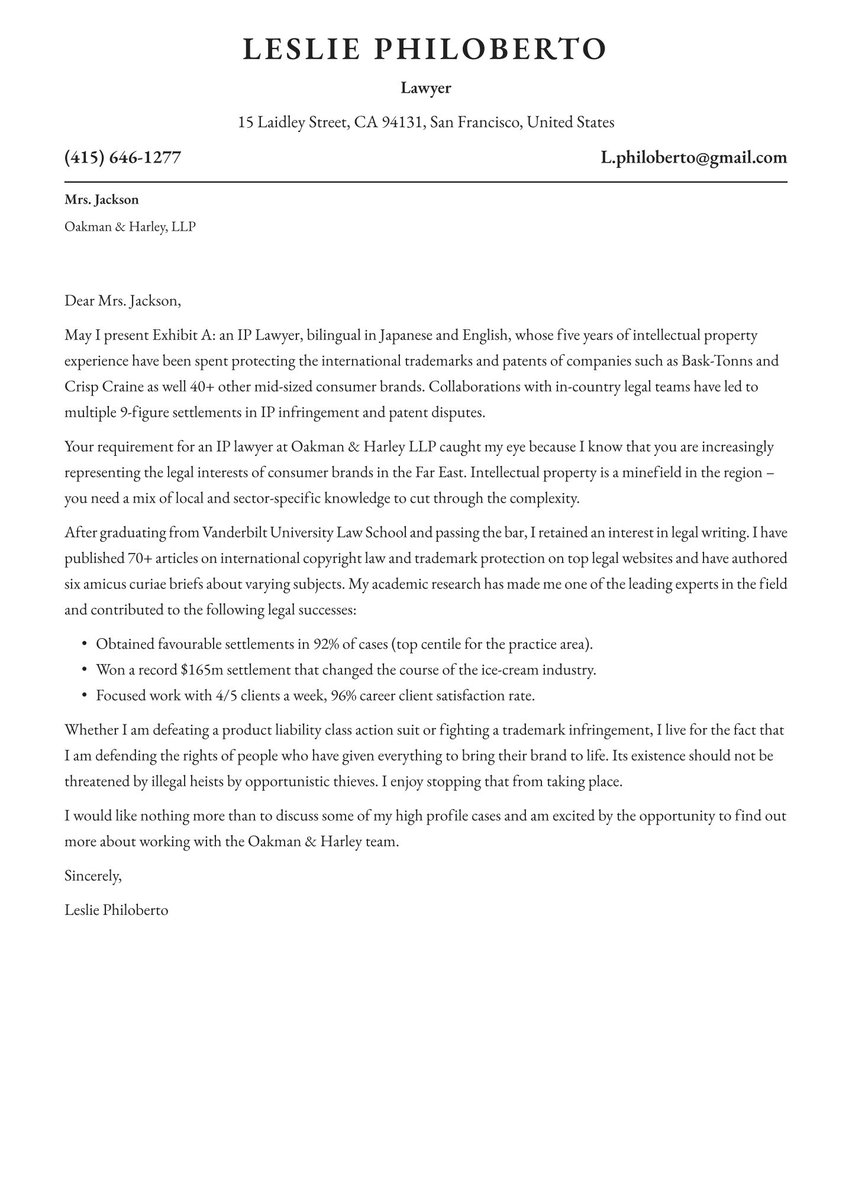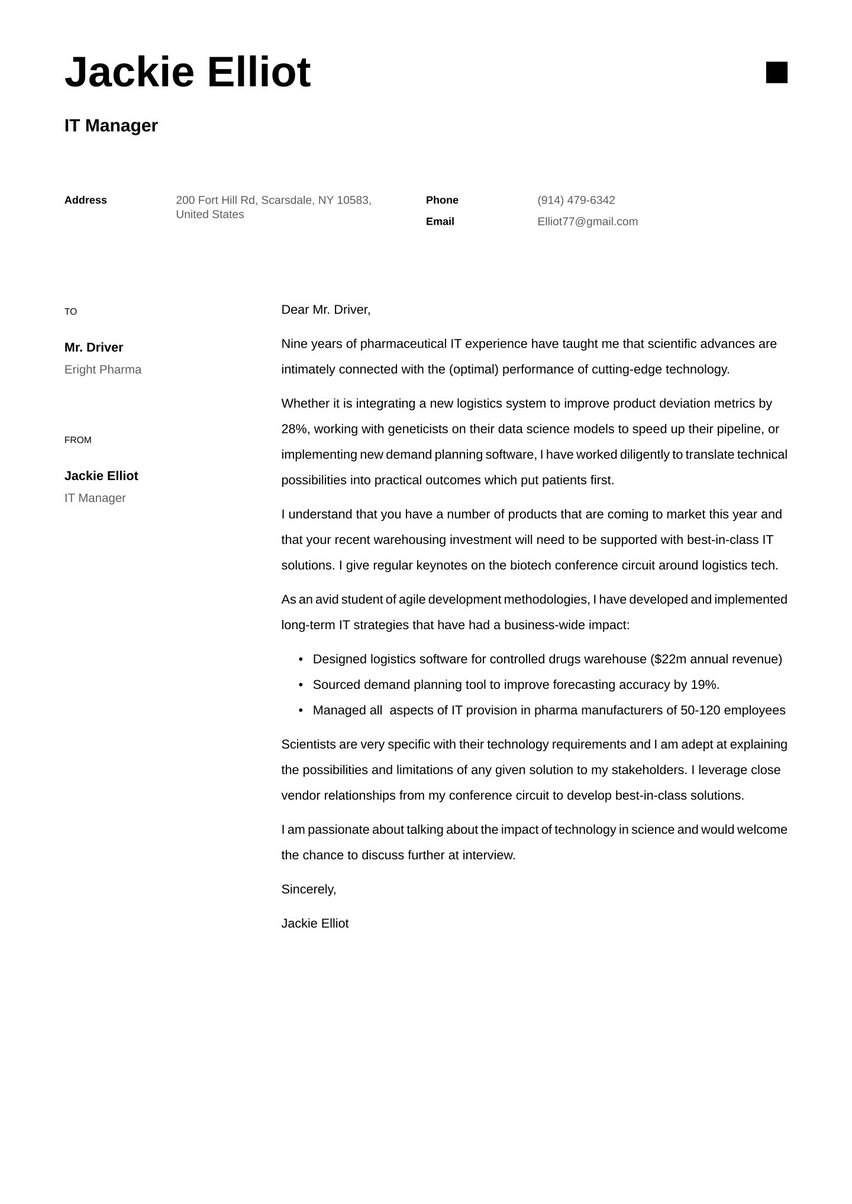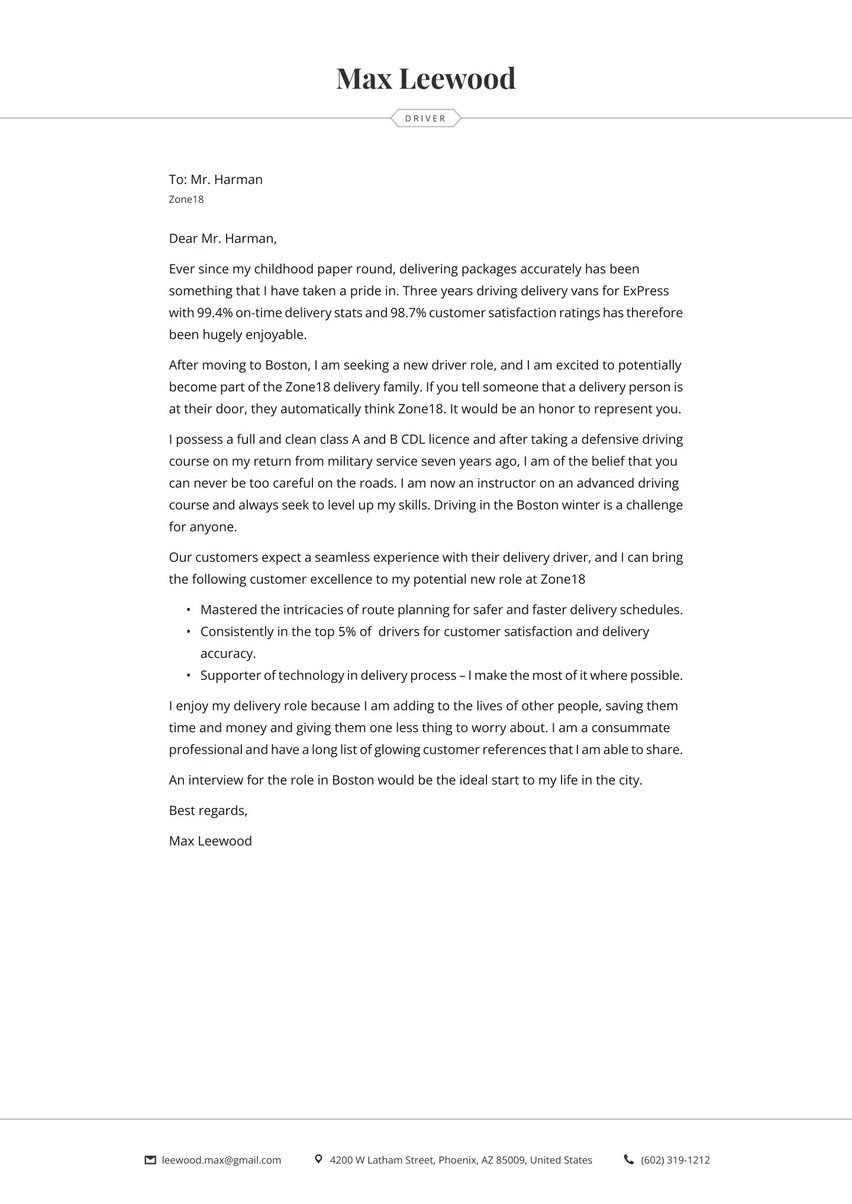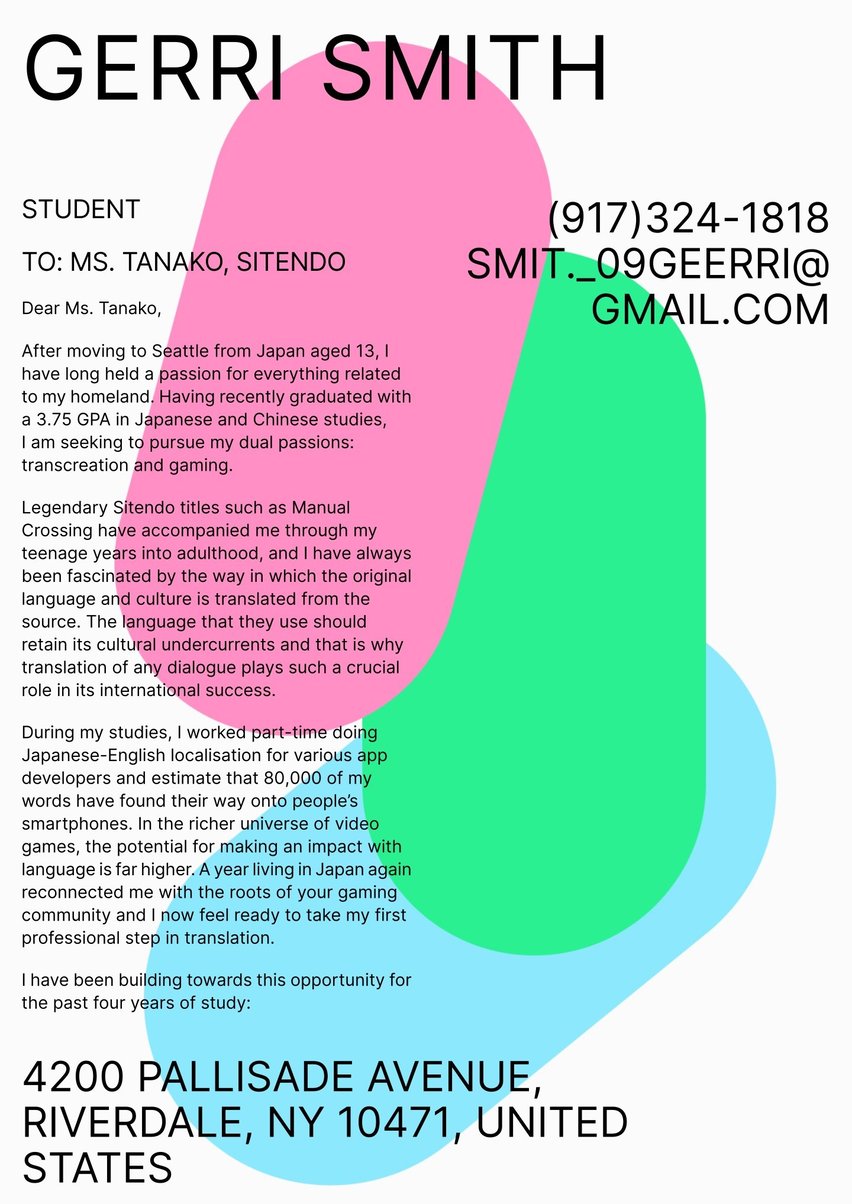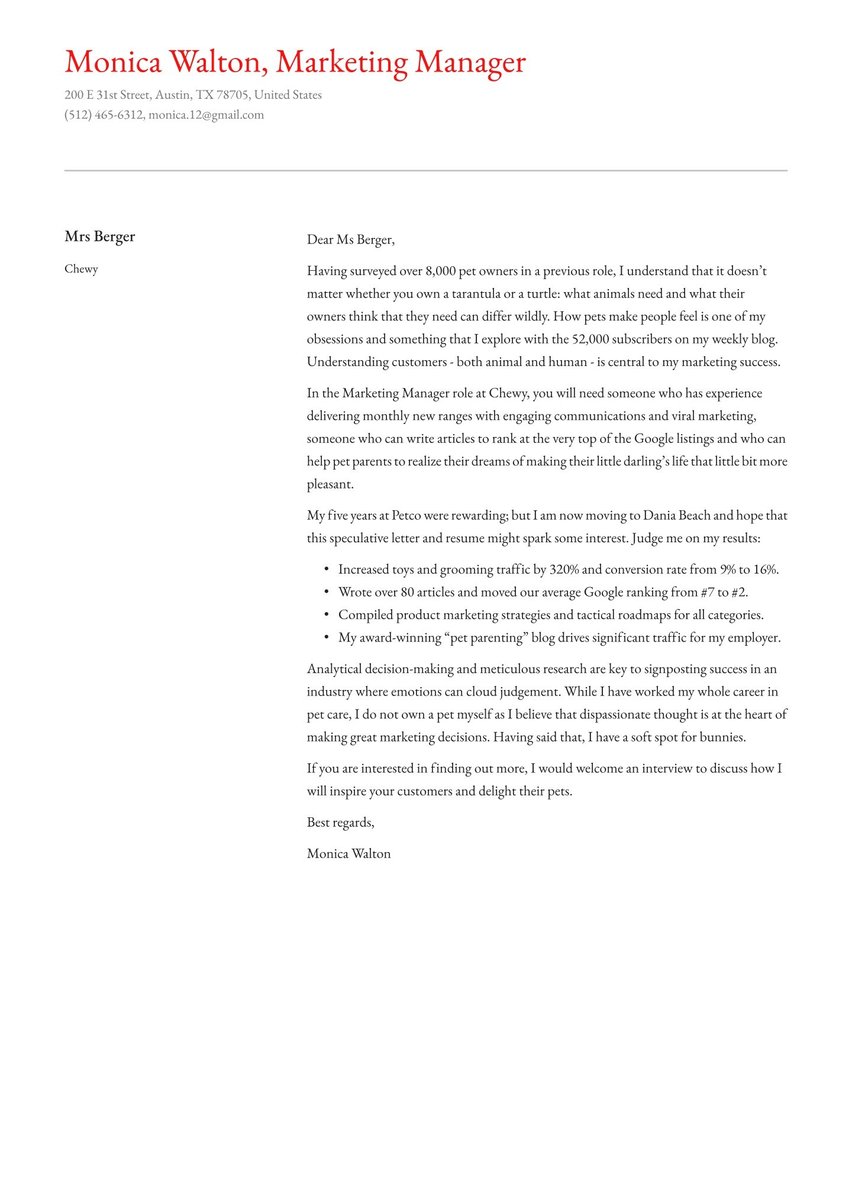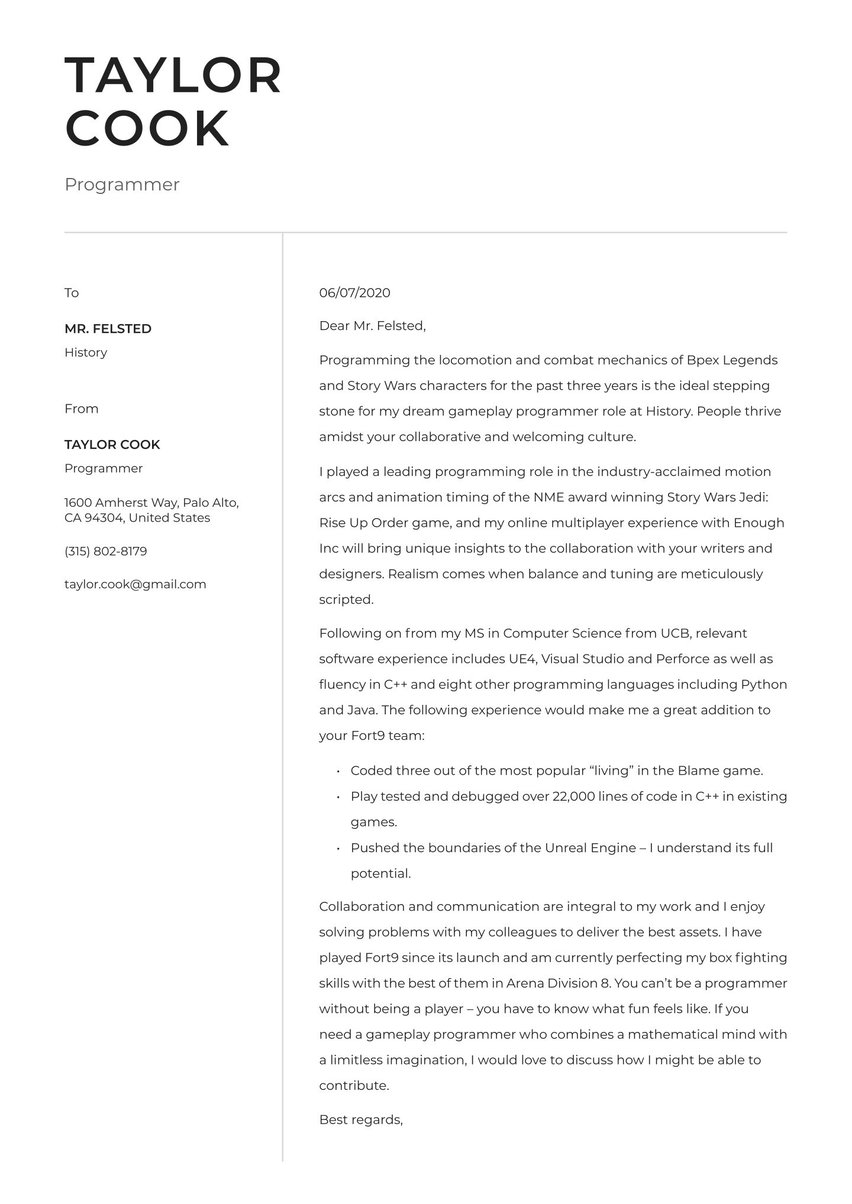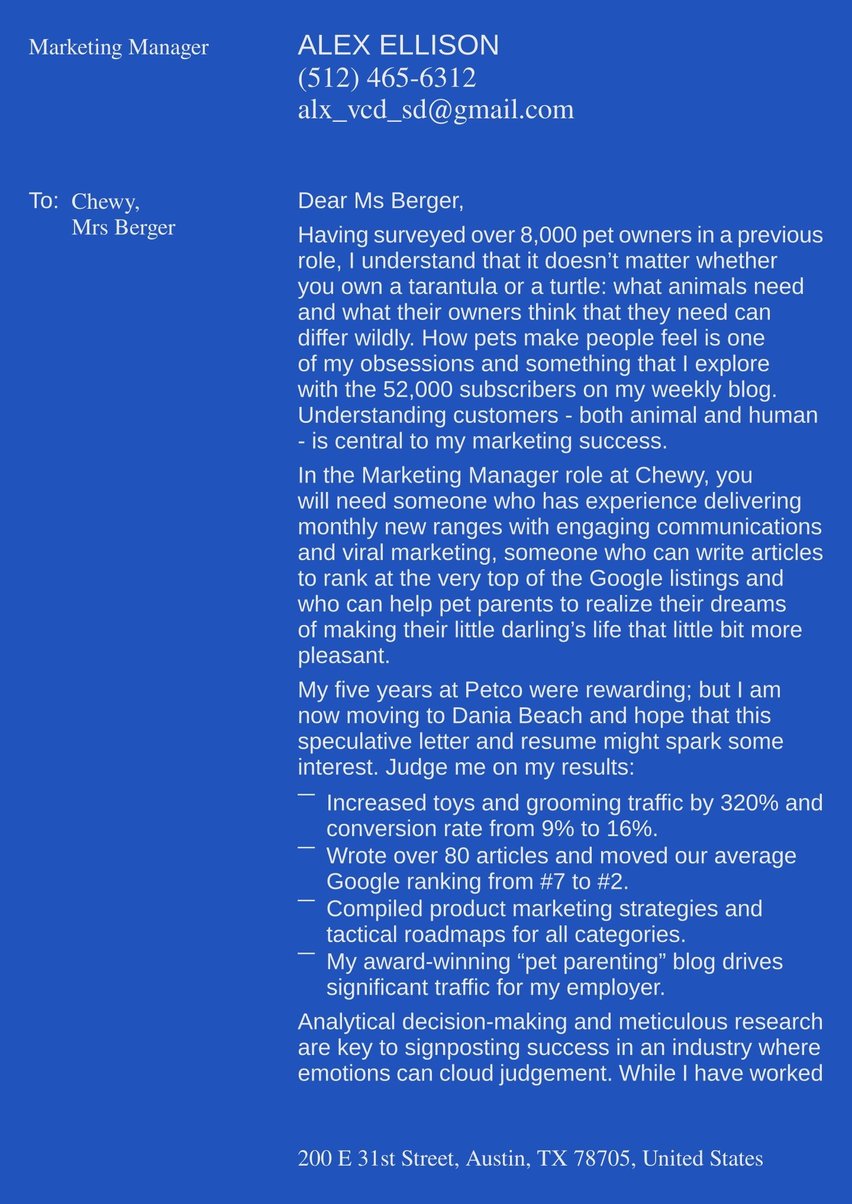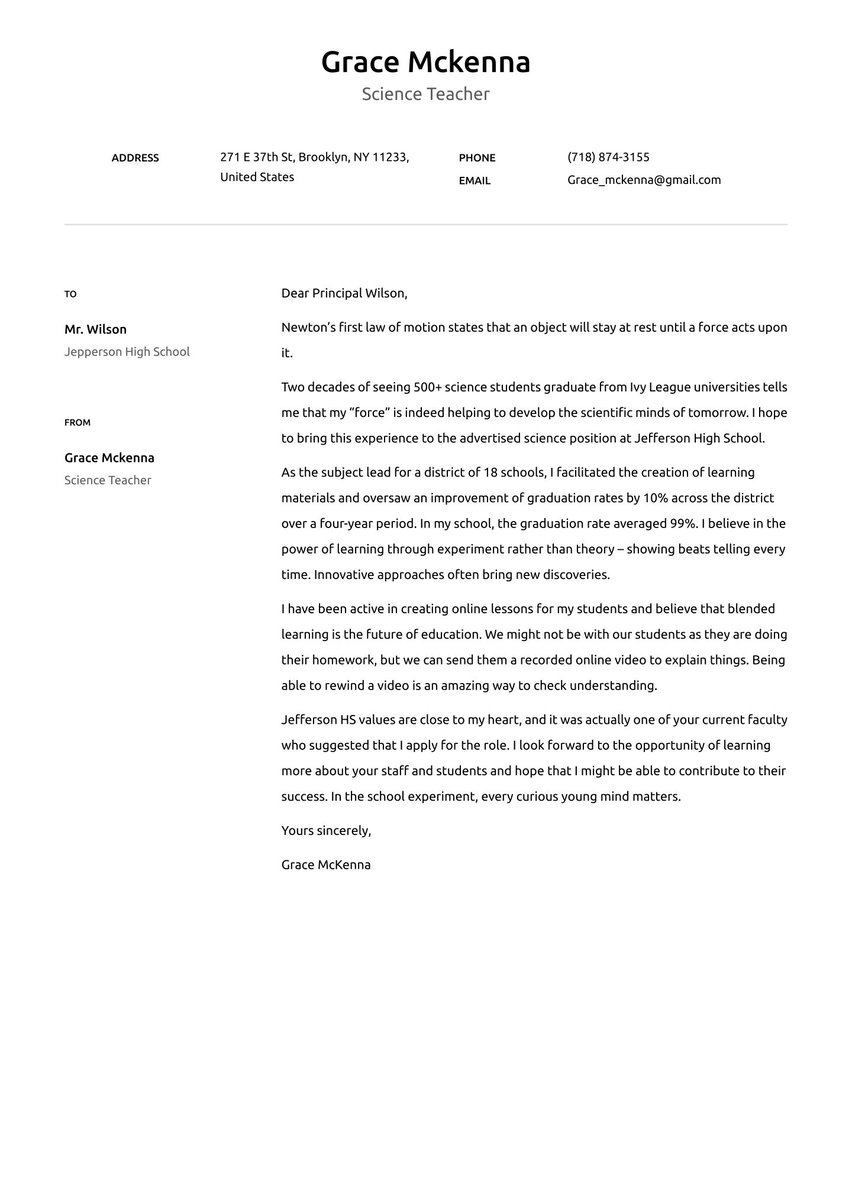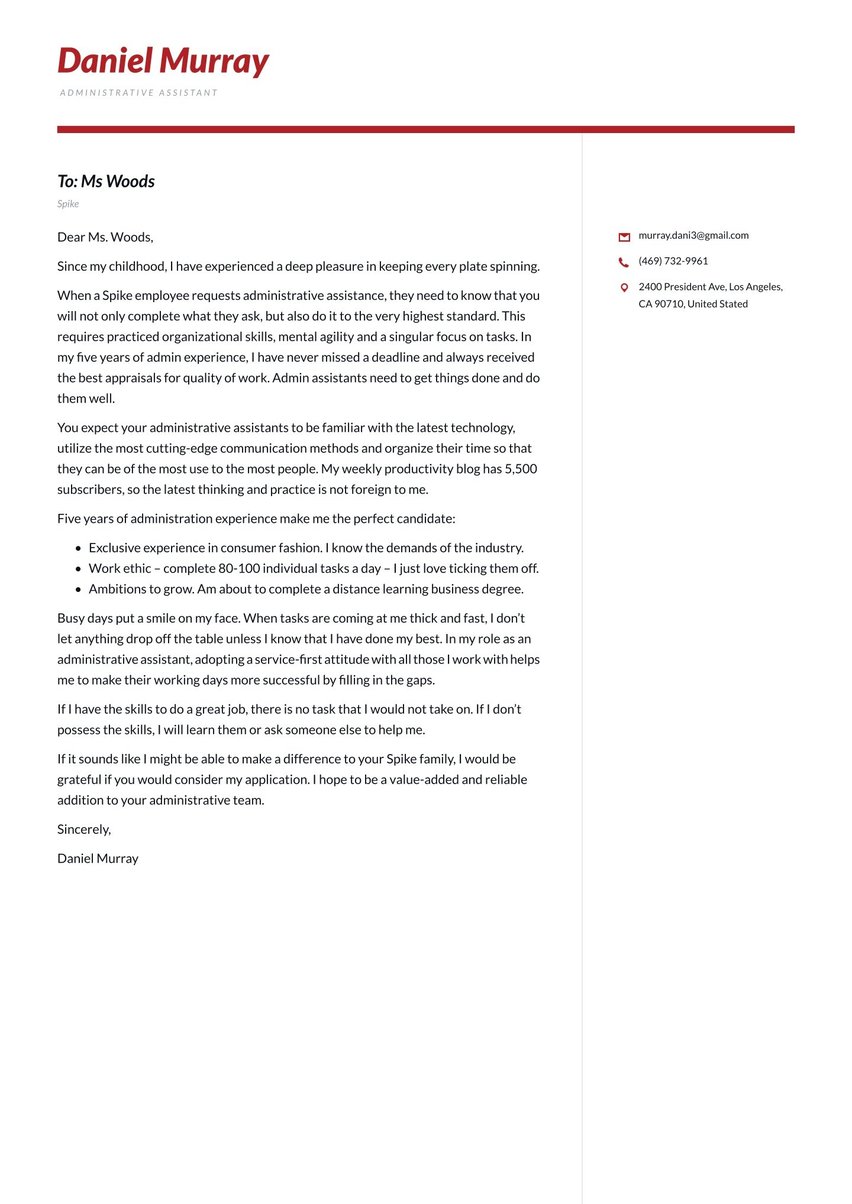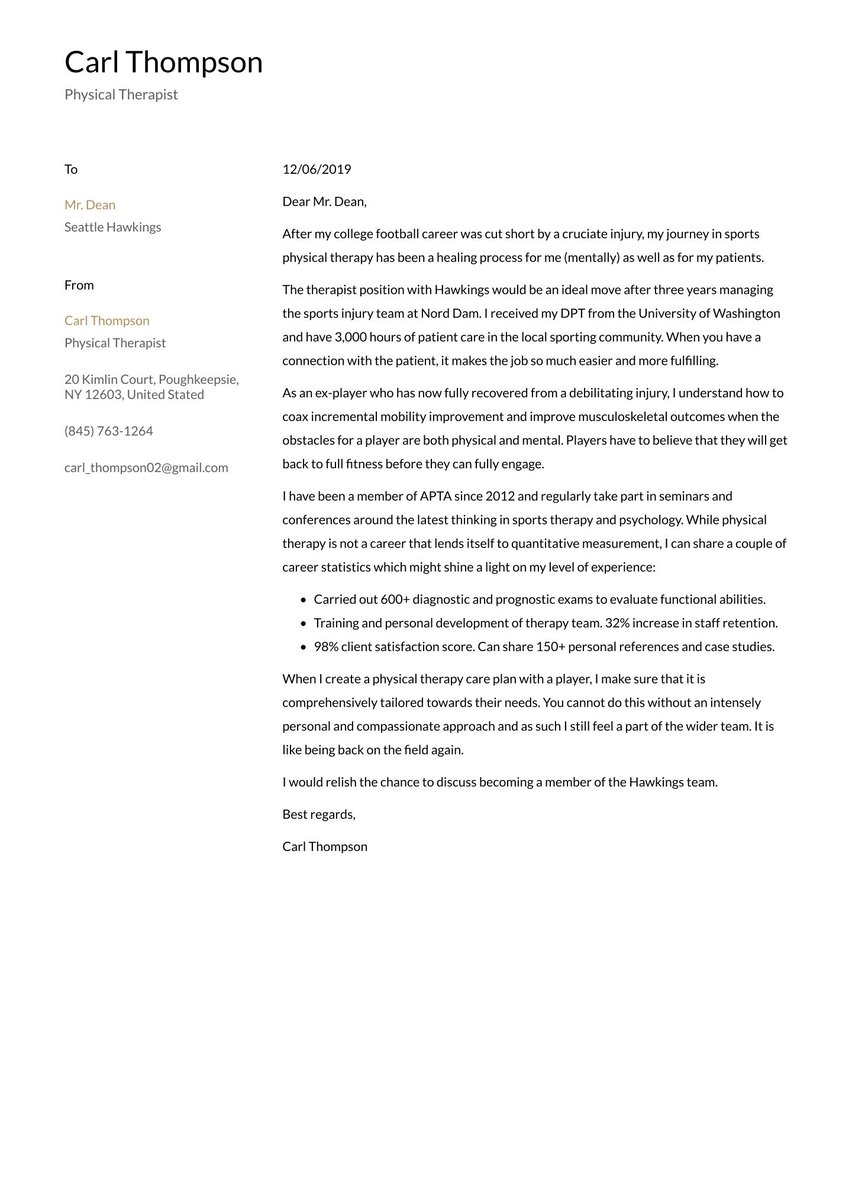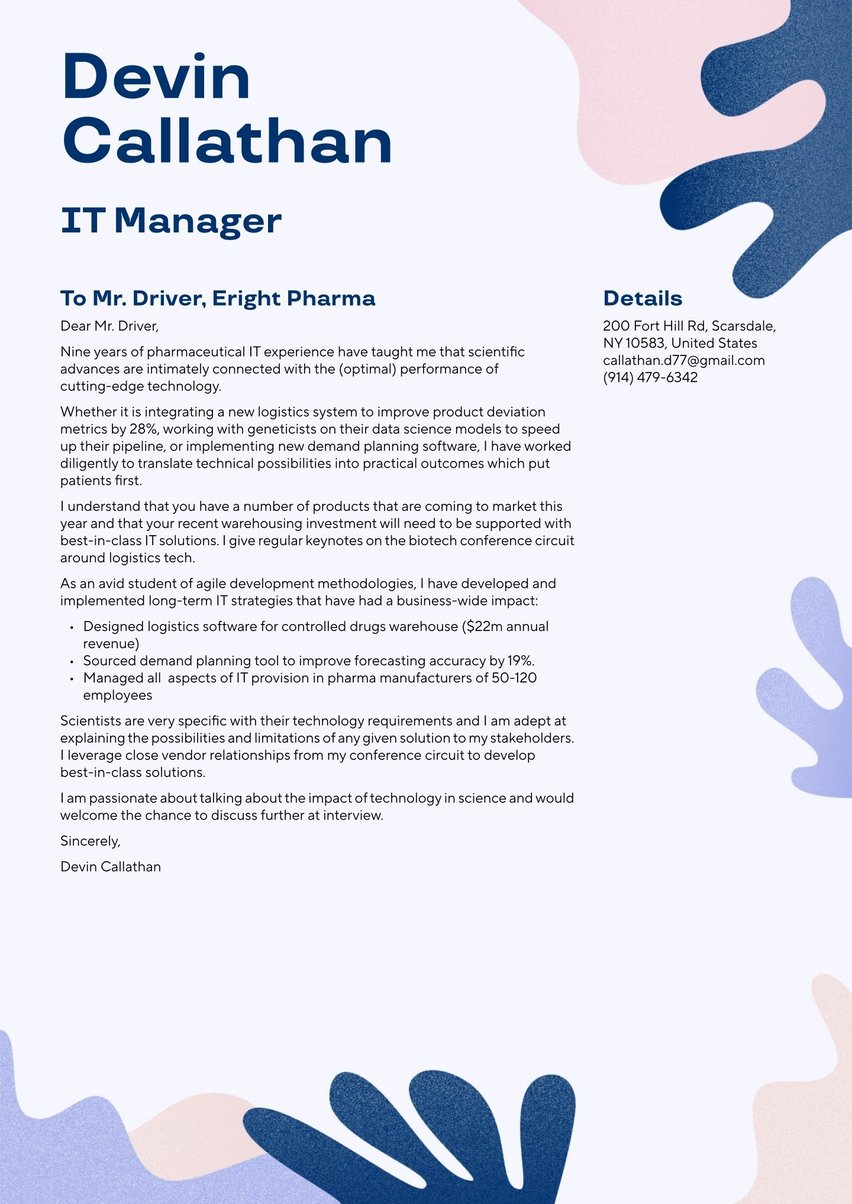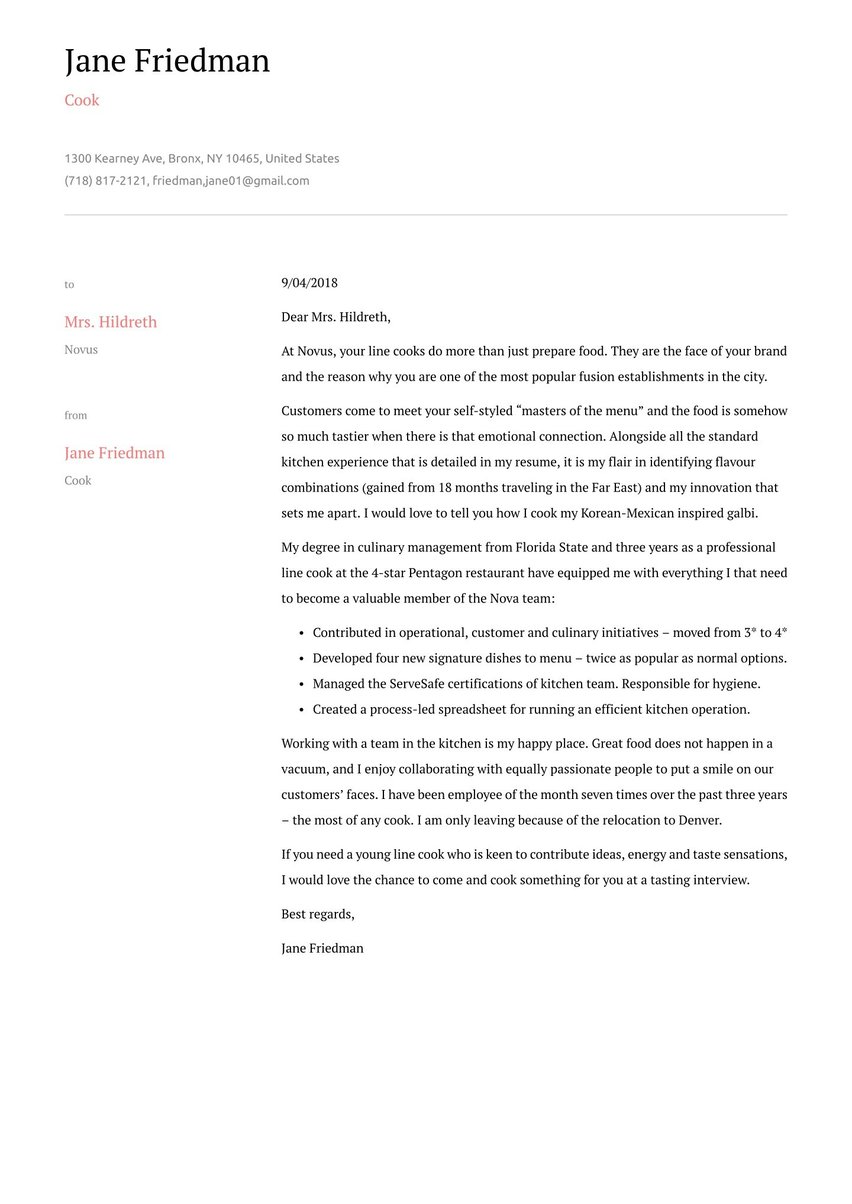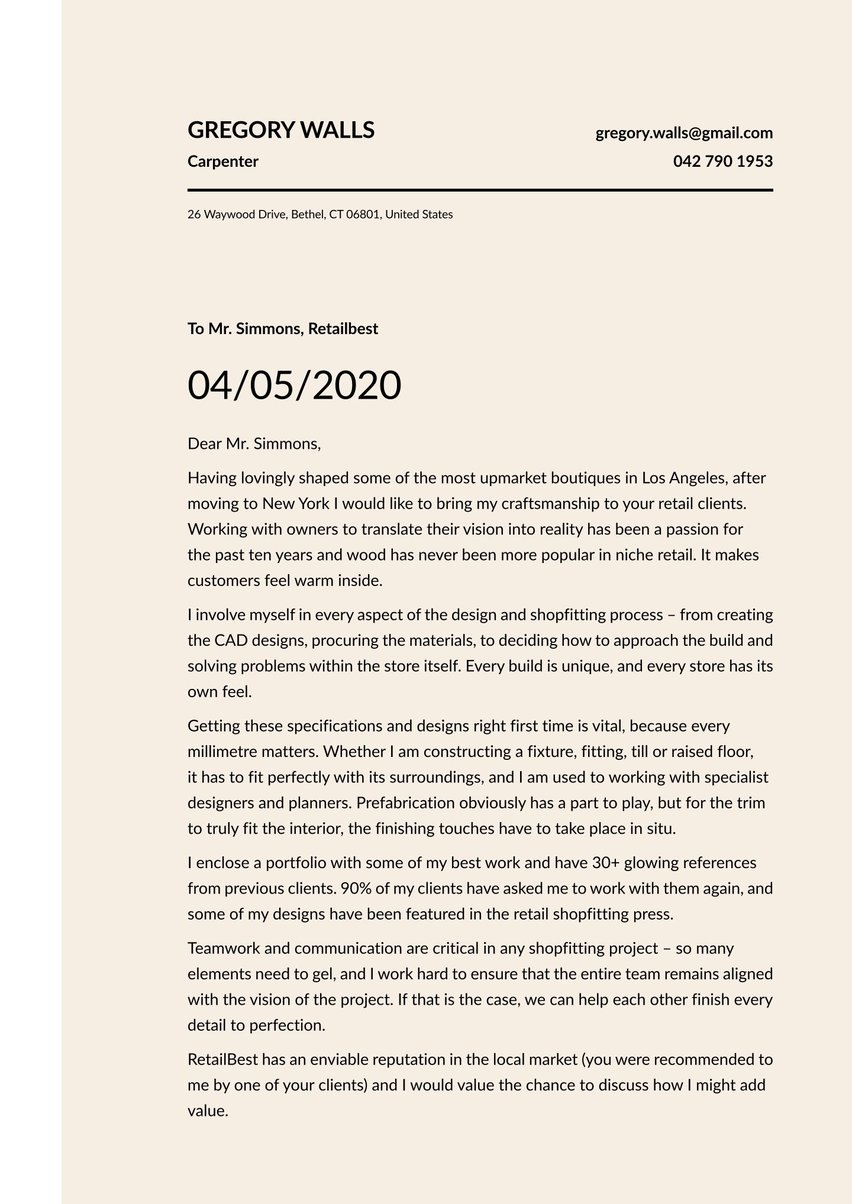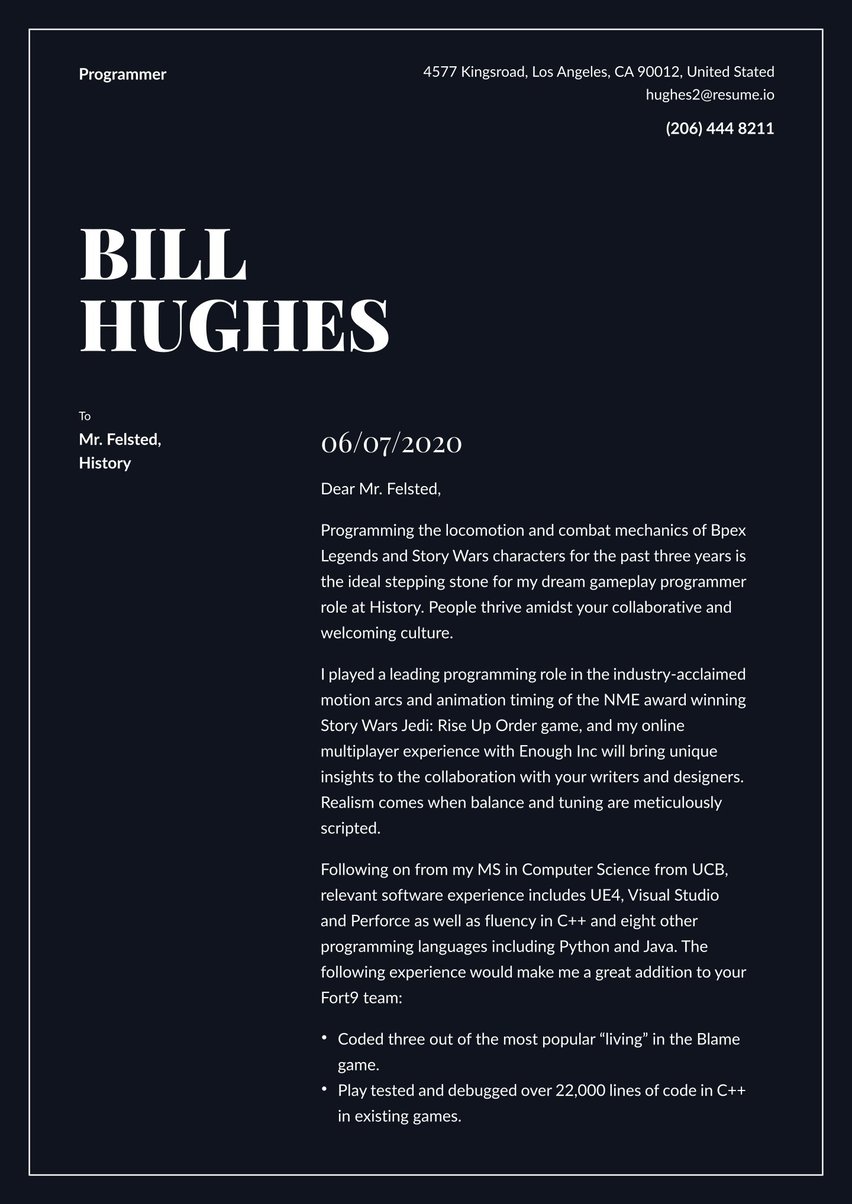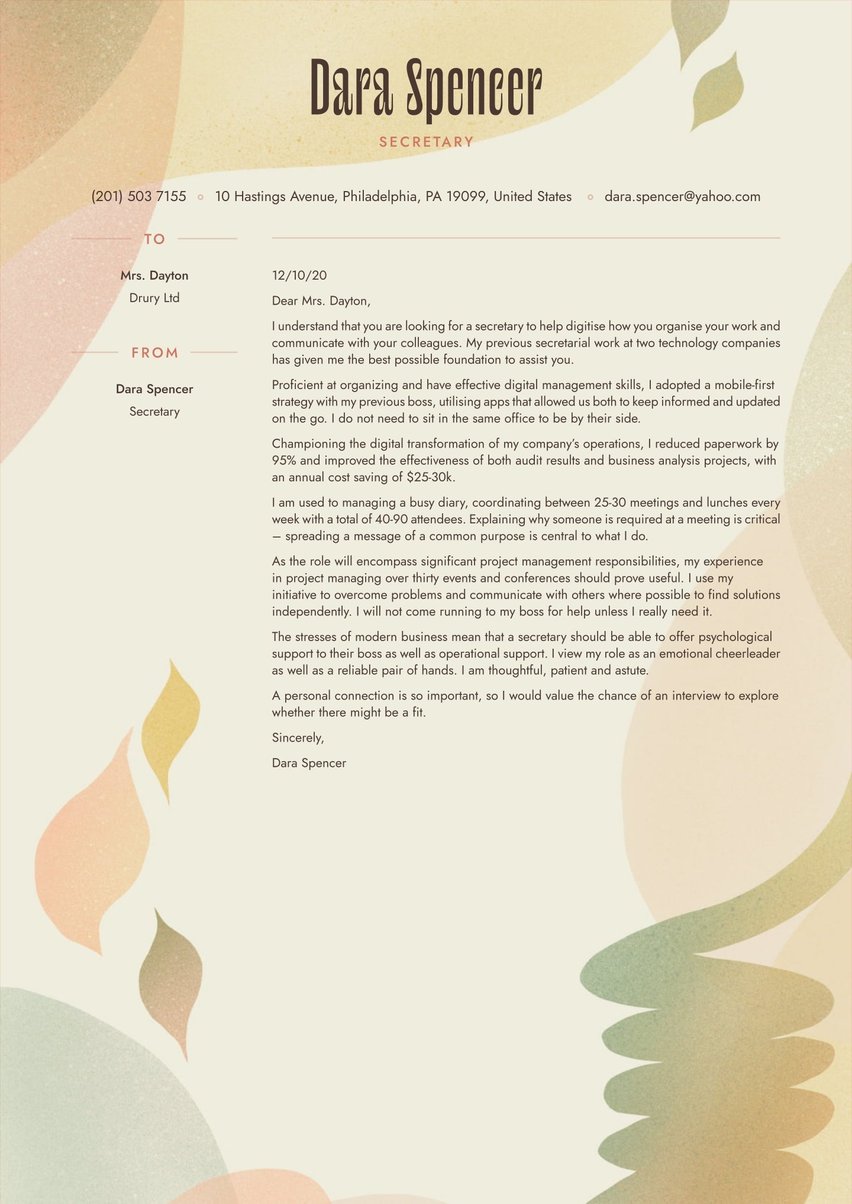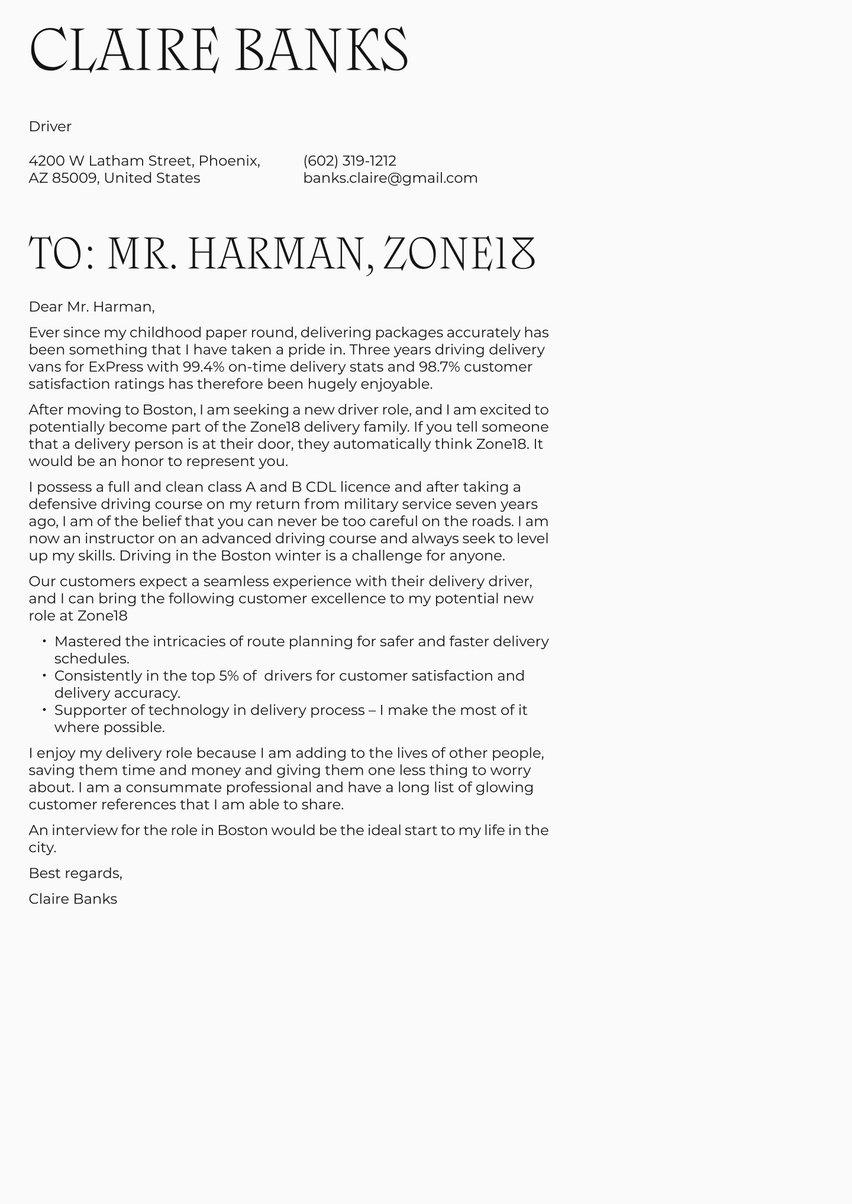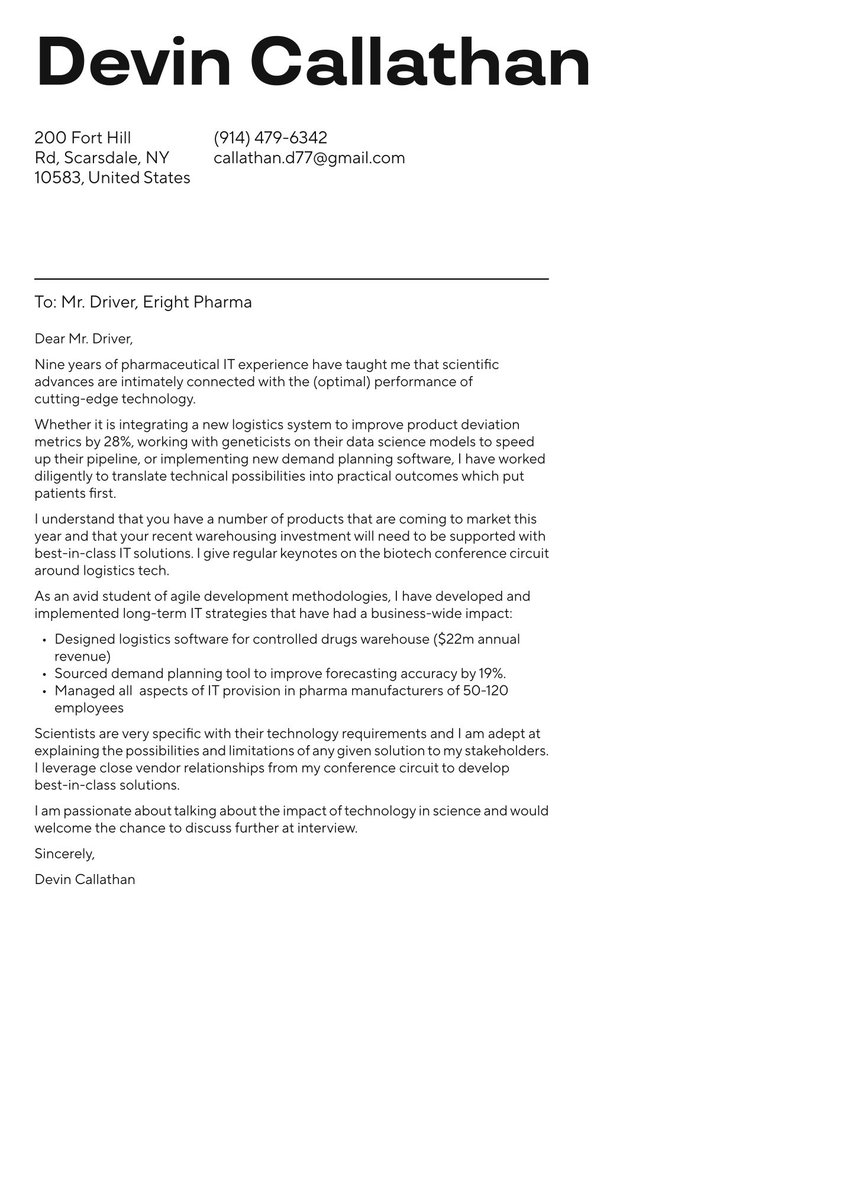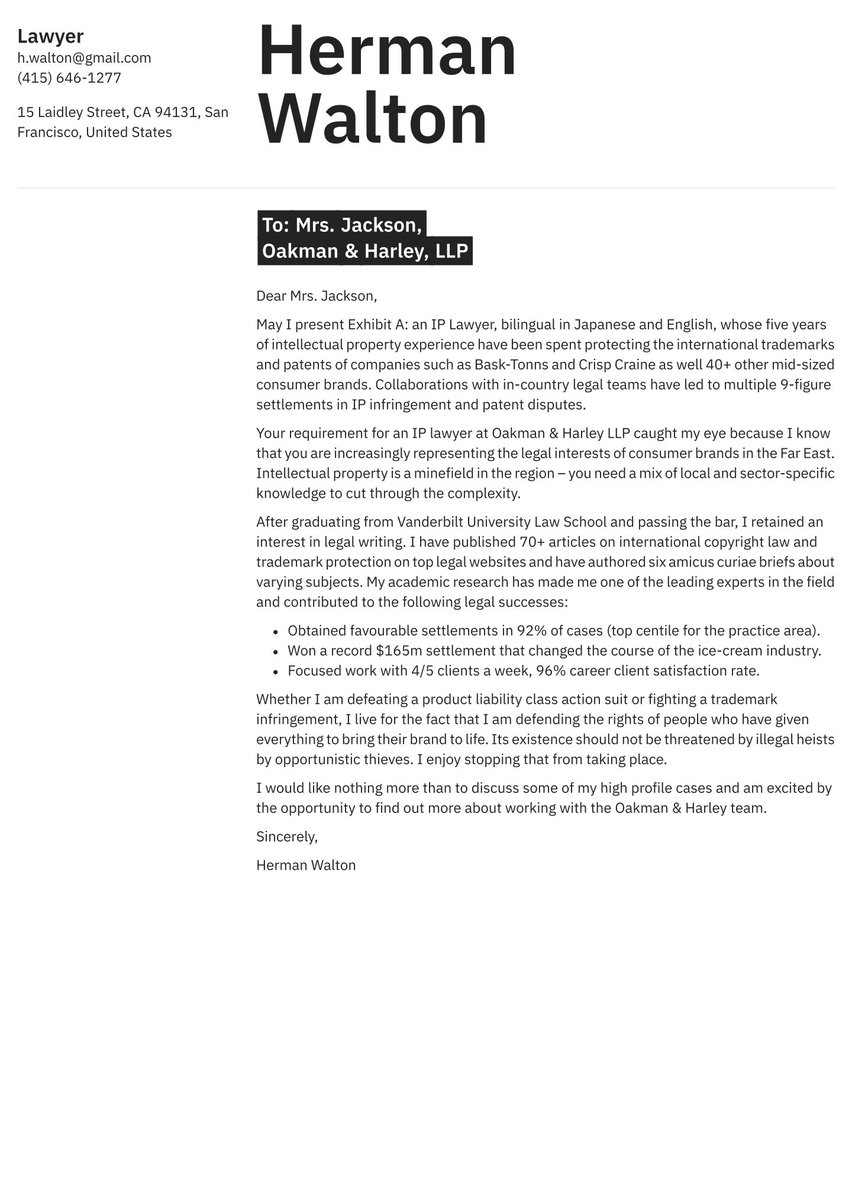Whether you are working in the healthcare, education, social care or philanthropy sectors (amongst many others), the attraction of working at a Nonprofit job is immense. Over 12 million Americans work in the sector, comprising 10% of the private workforce. That is a lot of opportunity, but also a lot of competition.
When you are writing a cover letter for a Nonprofit, although many of them are structured in similar ways to for-profit companies, there are many ways in which you can help your application to stand out. The vast majority of nonprofits operate in the $500k-$2m bracket, so an applicant’s motivation is as important as their experience. How will your role help the organization with its funding goals? How will you make an impact on the outreach efforts? How can you demonstrate talents that could prove useful in multiple ways?
When you work at a nonprofit, your job isn’t just your job. It is your life. Your employer would hope that you will be able to contribute in ways that venture far beyond the job description. That is what should be conveyed in the cover letter.
The specifics of each Nonprofit cover letter will vary significantly depending on the role, so in this cover letter example and guide we would like to offer some general guidelines about making the best possible impact (as well as exploring some considerations for some specific roles).
This cover letter example and its corresponding guide will demonstrate:
- The best cover letter format for a Nonprofit application
- What elements should be included in a Nonprofit cover letter and how to write each paragraph
- What writing tips and tricks to follow to impress employers
- Basic cover letter examples of mistakes to avoid.
A Nonprofit cover letter should be written alongside the resume. While the resume contains much of the factual experience and education, the cover letter should focus on the personal aspects that are so important for a nonprofit. For most jobs it is the factual stuff that holds the most weight, but for a nonprofit, I would argue that personal drive is just as important.
Nonprofits are struggling to keep up with the private sector. Total employment for nonprofits is down almost 5% from before the pandemic and a survey by Nonprofit HR found that 45% of nonprofit employees will enter the job hunt by 2025 and 23% of those want to exit nonprofit work. That means that jobs are out there for you, but how do you make your application stand out?
Best format for a Nonprofit cover letter example
Few Nonprofit successes come by chance, so your career story should be told in a structured and logical way, which is embodied in a great cover letter format. The more structured the story, the easier it will be to remember during an interview that may take place long after the letter has been read.
The tried-and-true cover letter format for a Nonprofit job includes the following elements:
- The cover letter header
- The greeting
- The cover letter introduction
- The cover letter middle paragraph (body of the letter)
- The conclusion and sign-off (cover letter ending)
This cover letter guide offers industry-leading advice to guide you through each section of the cover letter format, along with a cover letter sample that showcases how to implement this advice. Something that you might dismiss as unimportant or overlook in your haste to send the application off could make the difference between you getting the job or being left on the rejects pile. Don’t just think about what you want to say – how you present your case is equally as important.
This Nonprofit cover letter example demonstrate how you can write each paragraph/part in practical terms:
Dear Mrs. Latchworth,
Having worked in two Nonprofit organizations assisting young professionals in the financial community, I understand how vital the role of outreach coordinator can be. If you don’t understand the needs of your community, your impact can miss the target entirely.
I have been a vocal supporter of mental health education since my best friend was diagnosed with depression five years ago. If you do not understand what to do with some of the thoughts that enter your head, the risks can spiral. I have arranged mental health conferences and events for over 15,000 young financiers, attracting 170+ sponsors and over $6.5m of funding over a four-year period. Investing in the mental health of high-potential (but mentally vulnerable) employees is the best thing any corporate behemoth can do.
My previous roles have been primarily focused on research, marketing and fundraising management — building deep connections within the community at conferences and being an advocate for our work in both social and print media. My most prominent PR campaign achieved a 95% awareness rating among senior financial decision makers and was responsible for a 40% spike in donations. I believe in nurturing long-term relationships with sponsors who are morally invested in our work.
The value of an outreach coordinator is measured in both campaign and funding growth:
- Ran a six-month mental wellness campaign with 8 mid-level investment banks.
- Social audience grew 450% over three years and campaigns reached 5m+ people.
- 98% rated my “Mental Health in Finance” seminars as very good / excellent.
- Increased donations by 150% in my previous role, continuing to build my network.
I have worked in partnership with NextChange on many occasions and feel that now is the time to make my difference by working for you. I would love the opportunity of an interview to chat about how I might be able to help your current clients and reach out to new ones. Mental health matters to everyone, but especially to those starting out in their careers.
Sincerely,
Kristin Weathers
Cover letter header
The cover letter header could be viewed in the same way as making sure that you share the details of how to donate to your cause. If someone wants to hire you, they have to be able to get in touch with you easily. The header contains the vital candidate contact details and is situated at the top of the letter, so there is no excuse.
It is also common knowledge that our brains need a few seconds to switch from what they were previously occupied with and settle down to the task at hand. The header and the white space that follows it allow a reader’s mind to calm and focus on the application to come. Better this than them breeze through the vital first sentences without fully paying attention.
There is also a non-human reader to consider. The recruitment ATS software that most recruiters and HR departments use to process the applications will look for details such as email address and mobile numbers on the cover letter and resume. If those details are specifically located at the top in the header of the document, they are easy to find and there will not be any communication mix-ups along the line. HR assistants do not sit there keying in endless details to their systems, so simplify the situation for the machines.
You may not be a fit for this particular role; but being able to be contacted for future roles is equally important, whether the details are on your cover letter or resume.
The aim of this part: Sharing contact details again is not a waste of cover letter real estate – it is a vital part of the job search process.
Cover letter introduction
There is an extra layer of motivation when you go into work at a Nonprofit and an extra frisson of pride when you do something great. Somehow this sense of achievement hits harder when the cause is that bit worthier.
The introduction to your cover letter should give a two-line insight into your basic experience/background, as well as a “hook” that shows you actually understand the industry and/or are driven by the right motivation. It’s usually a good move to make the intro as confident as possible without edging into arrogance. Note how the intro line of our cover letter sample makes a bold statement right after giving a one-liner about the candidates basic background:
Having worked in two Nonprofit organizations assisting young professionals in the financial community, I understand how vital the role of outreach coordinator can be. If you don’t understand the needs of your community, your impact can miss the target entirely.
This intro will stand out in the mind of a non-profit hiring manager, so think carefully about how you can kick off the cover letter in impressive style. If there is one thing that you want a reader to remember about your candidacy, what would it be? Avoid exaggerating, be objective and don’t be overly boastful. Simply state the facts of your awesomeness.
You understand the mission of your employer and you know which levers to pull to make sure that it achieves its goals to maximum effectiveness. Cover letter introduction…. Tick.
The aim of this part: Hit first with your most impressive message. Not everyone gets beyond the first paragraph. Go with your big guns and give the details later.
This intro will stand out in the mind of a Nonprofit hiring manager, so think carefully about how you can kick off the cover letter in an impressive style. If there is one thing that you want a reader to remember about your candidacy, what would it be? Avoid exaggerating, be objective, and don’t be overly boastful. Simply state the facts of your awesomeness.
You understand the mission of your employer and you know which levers to pull to make sure that it achieves its goals to maximum effectiveness. Cover letter introduction…. Tick.
The aim of this part: Hit first with your most impressive message. Not everyone gets beyond the first paragraph. Go with your big guns and give the details later.
Cover letter body
The middle paragraphs (1-2, depending on how your letter is structured and how much text you have) are where you expand on how your contribution to the Nonprofit makes a difference. Highlight and quantify your key achievements with space-efficient bullet points. Share the values that lay behind your actions and describe how your relationships with others brought expansion and increased income.
Delve into your dealing with donors, sponsors and funding organizations and tease out just how you go about weaving your Nonprofit magic. With advances in technology and social media, there is no one recipe for success, so share some of your secret sauce.
What are the balances and checks that you employ at work and how do you ensure that all-important element of compliance? Nonprofits have to be more responsible in terms of their financials than the private sector as they are beholden to stakeholders that trust them to do the right thing with their money — how do you ensure transparency and value? The body of the cover letter is the place to hint at those important considerations.
You can see how the cover letter example shown above deals with presenting facts, achievements and experience:
I have arranged mental health conferences and events for over 15,000 young financiers, attracting 170+ sponsors and over $6.5m of funding over a four-year period. Investing in the mental health of high-potential (but mentally vulnerable) employees is the best thing any corporate behemoth can do.
My most prominent PR campaign achieved a 95% awareness rating among senior financial decision makers and was responsible for a 40% spike in donations.
If you pick examples that are somewhat out of the ordinary you will create a sense of curiosity in the reader. The best cover letters make the hiring managers want to find out more, so don’t share the mundane activities. Share a few scenarios with their results and leave them hanging a little with the detail of how you got there. That is for the interviews.
Show that you work well with others – communication and influencing skills are central if you want to get anything done in such a people-oriented environment.
The aim of this part: What will you bring to the team and how will the cause be advanced by your participation. These are big questions - think hard about the examples you share.
How to close a nonprofit cover letter (conclusion and sign-off)
Any salesperson knows that they need to finish on a convincing note. When you are persuading someone that something is worthwhile, their interest will likely waver as you present your arguments, but any successful persuasion ends with a powerful point and a call to action. The conclusion to a Nonprofit job application cover letter is no different.
We suggest sharing one last piece of persuasion, a reason why you should be invited to interview, and then don’t be shy to ask for that chance to meet. When you work at a Nonprofit you are often part of a close-knit team that has a common vision, so expressing a desire to meet and share your dreams is entirely understandable.
If the reader has a sense that you might be a good fit, they will be looking for one more reason to invite you and one more thing to discuss with their colleagues and bosses.
Consider this cover letter sample and note how it logically ties in the next step of the relationship, while simultaneously offering an avenue for a continuation of the dialogue:
I have worked in partnership with NextChange on many occasions and feel that now is the time to make my difference by working for you. I would love the opportunity of an interview to chat about how I might be able to help your current clients and reach out to new ones. Mental health matters to everyone, but especially to those starting out in their careers.”
Sincerely,
Kristin Weathers
The aim of this part: Finish on a persuasive high note and don’t forget to convey your enthusiasm about the thought of meeting and sharing your motivations.
Writing tips and tricks: address real employer and organization needs
So many Nonprofit types will go to parties and hear how people “love” their cause, only to find that they really don’t understand much about it at all. Make sure that your cover letter is packed with factual experience rather than empty phrases.
When you are passionate about an area of your life, it is tempting to use flowery language to convey your enthusiasm. That is fully understandable, but in a job application the most powerful proof is when you share concrete achievements and relevant experience. Nothing speaks “fundraiser” more than a balance sheet overflowing with donations. Tell the story behind it and expand on how you got there.
Non-profit leaders will indeed be looking for hints of motivation in every word of the cover letter, but it is best to share an extra aspect of your expertise than an extra 4-5 subjective adjectives. You can be sure that all the less experienced applicants will be padding out their cover letters in this way in the hope of tugging on a hiring manager’s heart strings, but the only thing that matters is the meat of your story. Describe what you have done, and it will illuminate the direction of what you want to do.
Most Nonprofits either promote a cause and/or provide a service. If you are explicit and specific about how you promoted that cause or contributed to that service, no other words are necessary. Whether you were working for Doctors Without Borders or Human Rights Watch, your belief in what you did is taken for granted. It is what you did with that belief that will create a lasting impression and potentially set you apart from the competition.
If you are looking to enter the industry – share similar experiences
There are many roles that are unique to the Nonprofit industry. Few other industries have a demand for outreach coordinators, grant writers or directors of philanthropy (amongst many different work streams). At a senior level, experience within the role will be desirable, but for most job roles that will be a raft of transferable skills from other occupations.
The Nonprofit sector needs fresh talent like any other, so if you feel that you have something to offer, don’t be shy. You can analyze how the cover letter sample attached to this guide bridges the gap between the finance community and Nonprofit work.
When you have a forensic understanding of the demands of each role, you can pull out aspects of your past experience that will show that you have carefully considered the move. Outreach work has much in common with sales and customer service activity, many writers will possess the tools to learn grant writings and top PR minds might relish the chance to become a Director of Philanthropy.
Tap into the language of the non-profit industry
In any job application it is important to mirror the language of the company and the job description, and this is particularly important for a Nonprofit application.
The cover letter example we offered in this guide showcases a Nonprofit candidate that has experience in the financial sector. It therefore adopts a passionate but strictly professional tone, as the candidate should understand the precise nature of finance. The writing of the non-profit cover letter sample also balances on a fine line between altruistic, sincere yet slightly restrained language, as it’s important to showcase your reliability in this professional field.
While nonprofit roles will vary by industry (In the U.S. — 55% in healthcare, 14% in education and 12 in social assistance), it is essential to eschew the commercial language of profit and loss and talk in more community-led tones that are centered around the cause rather than the bottom line.
This is one of the biggest challenges when you are moving from a commercial environment to a nonprofit. How you measure success will vary, but how you get there might actually be fairly similar. Look at how the responsibilities are worded in the job description and imagine yourself in the new job as you write the cover letter. Would the hiring manager reading it recognize the language as “one of their own” or would they think that it somehow doesn’t sound right?
There is an inescapable “them and us” scenario when someone is joining the Nonprofit sector from a commercial environment, but this can be softened by the language that you choose.
Basic mistakes in a nonprofit application letter (and how to avoid them)
It is sometimes easy to forget the basics when you are concentrating on the messaging of your letter, but even the best applications can be derailed if the basics of cover letter writing are not covered off.
- Spelling and punctuation need to be perfect. Communication is key in the Nonprofit sector and in most functions maintaining a professional image is critical. Take great care with your spelling and grammar, as any small mistakes may cast an unfavorable light on other personal traits such as reliability and attention-to-detail. Frankly, checking and double checking your letter just shows that you care. Use a grammar checker.
- Resist the urge to elaborate on details. When you have 300 words to summarize your story, it is easy to use up a few too many on your proudest highlights — at the expense of other nearly equally worthy feats. If you break up the text with bullet-pointed lists and keep the sentences and paragraphs short, it is eminently possible to pack lots of detail into what seems a small space.
- Don’t be afraid to share your why as well as where you have been. While it is true that sharing your genuine experience and achievements is more important than flowery language and vague beliefs, coming up with a powerful one-liner that expresses who you are and “why” you go to work is always a powerful idea. If this is unique and resonates with you (and that you can back it up in an interview), then it is a mistake to omit it.
Key takeaways
- Share the non-profit stories that have brought the most value to your causes.
- Use the language of the non-profit industry and highlight your transferable skills.
- Structure the letter to give a flow and a rhythm - make your story easy to read.
- Pick examples that you will be able to expand upon further during an interview.
With the resume and cover letter templates from Resume.io, you can rely on our expertly-researched templates to make the best possible impression on potential hiring managers. When the template looks great, you have already got the reader in a positive frame of mind. Hopefully this guide has also helped a little with the content.
Since Nonprofit roles are closely connected to organizational skills and project work, you can take a peek at the related business and management cover letter examples:


